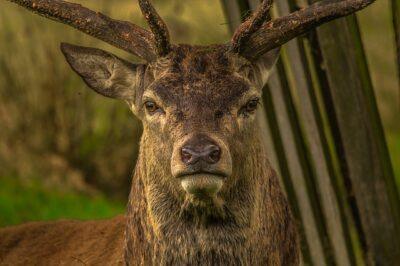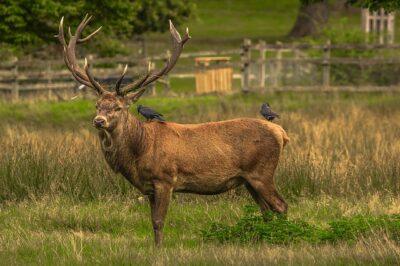The post Here’s What To Do With All Of Those Extra Deer Parts Find more on: http://www.totalsurvival.net/
Here’s What To Do With All Of Those Extra Deer Parts
When you hunt and use every part of a deer, you respect and honor not only just nature but age-old hunting traditions that we seem to have forgotten in our busy digital life.
Hunting as a means to feed and provide for your family is a natural act, but knowledge about it is beginning to fade from our society. So, below we will discuss how to hunt a deer and use every single part of the animal for a benefit to yourself and the land.
There are two general types of hunting — bow and rifle – and we will discuss both interchangeably.
How to Find the Best Spots
First, you’ll have to find public or private land to hunt on in your area. Public lands generally will require hiking in, because they will have vehicle restrictions. Private lands may allow vehicles, which will make getting to your spot easier and hauling out a whole lot easier, once you’ve bagged your game.
Either way, make sure you park at least a mile out, because even if you’re going to overnight so the noise won’t be an issue, the smell of the vehicles could scare aware deer.
There are several types of terrain that you need to use to give you an edge. Get a TOPO (topography) map of your area. This will allow you to see the following terrain shapes so you can use them in your successful hunt.
Learn the Terrain
Cover Funnels
This is where the cover that they are using to hide necks down to a narrow spot. If you took two beer bottles and laid them in the ground with both of their opening perfectly facing each other and touching, you would have an hourglass shape.
This is the perfect shape of a cover funnel. There are open areas all around, but the cover area necks down and gets narrow at some point. This is going to be a prime spot to hunt or put up a tree stand. The deer will basically be funneled into that narrow area.

Image source: Pixabay.com
Saddles
Here you have two hills with a valley in between. This is called a saddle. The deer will come through here because they don’t like to walk the ridge line. Plus, like most creatures, they, too, take the path of least resistance.
If two large habitats are on either side of your saddle or cover funnel above, then you have a great bottle neck they have to come through.
Points
If you have a great big long point that covers a large area, then the deer will follow the hill and make their turn at the base of that point. Just like you, they have no interest in going over the top of it. So, as they go around it, they turn at the base of it. So, that base point is a good spot to hunt.
Ridge Lines
Deer for the most part won’t travel ridge lines. They are not under cover if they do, and more dangerous. If you have a long ridge line they will generally be 3/4 of the way down it or more.
I’m not saying that this is a good place to hunt — just saying that ridge lines are typically not.
Food And Droppings
There is a great deer hunter saying that is so obvious that it’s painful. The saying is: Hunt where the deer live.
So, use the TOPO features but also start looking for their favorite foods. As an example: If you find an acorn pile under some oak trees, look for droppings and hoof prints as sign.
Deer love acorns, and they can put on weight with them faster than other foods.
If you see an area of natural browse where there is a lot of twigs, seeds, berries and leaves that make up the bulk of their diet, look for signs nearby. If it’s pre-rut season, then look for tree rubbings along with your other sign markings. They will be rubbing the velvet from their antlers. You may see dried velvet at the base of the tree with rub marks.

Image source: Pixabay.com
These are all really good signs that you’re hunting at a good location.
How to Use All Of The Deer Parts
To follow the tradition of the old hunting ways, learn how to use every part of the deer. We won’t cover the meat, because we will presume you’re going to eat it. So, we’ll just cover the rest.
Antlers
They make wonderful silverware and knife handles. Cut them into ¼-inch thick slices or less to make great buttons. Drill holes through the centers, run wiring and make lamps, sconces, and chandeliers when putting several together. They also make great handles for cupboards, doors, drawers and more.
Cut a good piece off and drill a hole through it. Run the pull cord of your lawn mower through it and you have a cool pull cord handle. Get creative and you will find hundreds of uses. You even can make handles for your fireplace poker, brush and shovel.
Bones
Cut them into lengths, freeze them and pull one a week out for your dog(s). You’ll save on food bills and Fido will be in heaven. Grind the bones and mix a teaspoon into your dog’s food each day for the natural bone calcium. Grind them up and till them into your garden area. By spring when you go to plant, the soil will be rich with nutrients and minerals, so you can grow nutritious foods.
Entrails And Scraps
Cut them into pieces and freeze. Many people enjoy eating organs. Or, you can thaw them all year long and feed your dog(s) and cat(s). Or, put the pieces beneath the seeds you’re planting in the spring for your garden. As they decompose it provides great nutrients for your vegetables and fruits.
Hide
Tan the hide as shown in our article: The Easiest Way To Preserve And Tan Hide. You can make anything — clothing, blankets, tools, shoes and even wall decorations.
We sincerely hope that this information helps you in your deer hunting and game usage. And we wish you a successful hunt.
What advice would you add? Share your own tips in the section below:
The post Here’s What To Do With All Of Those Extra Deer Parts appeared first on Off The Grid News.
This Article Was Originally Posted On offthegridnews.com Read the Original Article herecheck out the full article Here: Here’s What To Do With All Of Those Extra Deer Parts

No comments:
Post a Comment